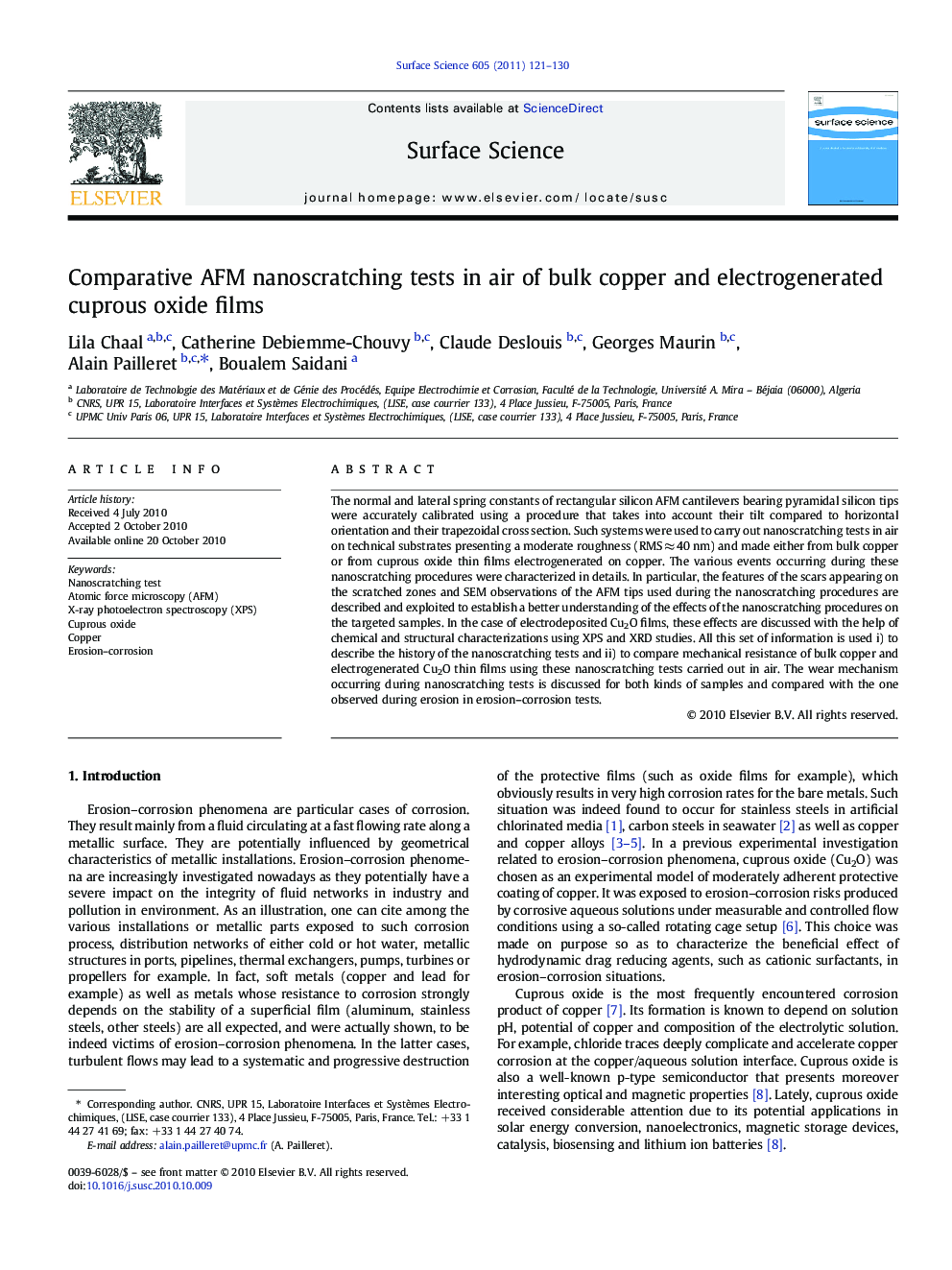| Article ID | Journal | Published Year | Pages | File Type |
|---|---|---|---|---|
| 5423646 | Surface Science | 2011 | 10 Pages |
Abstract
The normal and lateral spring constants of rectangular silicon AFM cantilevers bearing pyramidal silicon tips were accurately calibrated using a procedure that takes into account their tilt compared to horizontal orientation and their trapezoidal cross section. Such systems were used to carry out nanoscratching tests in air on technical substrates presenting a moderate roughness (RMS â 40 nm) and made either from bulk copper or from cuprous oxide thin films electrogenerated on copper. The various events occurring during these nanoscratching procedures were characterized in details. In particular, the features of the scars appearing on the scratched zones and SEM observations of the AFM tips used during the nanoscratching procedures are described and exploited to establish a better understanding of the effects of the nanoscratching procedures on the targeted samples. In the case of electrodeposited Cu2O films, these effects are discussed with the help of chemical and structural characterizations using XPS and XRD studies. All this set of information is used i) to describe the history of the nanoscratching tests and ii) to compare mechanical resistance of bulk copper and electrogenerated Cu2O thin films using these nanoscratching tests carried out in air. The wear mechanism occurring during nanoscratching tests is discussed for both kinds of samples and compared with the one observed during erosion in erosion-corrosion tests.
Keywords
Related Topics
Physical Sciences and Engineering
Chemistry
Physical and Theoretical Chemistry
Authors
Lila Chaal, Catherine Debiemme-Chouvy, Claude Deslouis, Georges Maurin, Alain Pailleret, Boualem Saidani,
